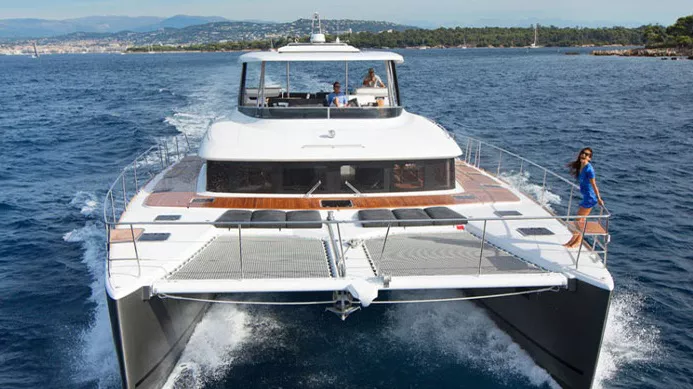Seasickness is a common concern for many individuals embarking on maritime adventures. The discomfort arises when the brain receives conflicting signals from the inner ear, eyes, and deeper body parts involved in balance. While some are more susceptible than others, the type of vessel can significantly influence the likelihood and severity of seasickness. This article delves into the motion dynamics of catamarans compared to monohulls and explores how these differences impact the sailing experience, particularly concerning seasickness.
Understanding Vessel Motion and Its Impact on Seasickness
Monohulls: Rolling and Heeling Motions
Monohull sailboats are characterized by a single hull and a weighted keel. In rough seas, they often experience significant rolling (side-to-side motion) and heeling (tilting to one side), which can be disorienting and contribute to seasickness. The slow, rhythmic motion of monohulls, especially their tendency to roll at frequencies around 0.2Hz (a cycle every 5 seconds), is closely associated with inducing motion sickness.
Catamarans: Stability and Predictable Motion
Catamarans, with their twin-hull design, offer enhanced stability. This configuration minimizes rolling and heeling, resulting in a more predictable and often gentler motion. The wider stance of catamarans reduces the likelihood of motion sickness, as the human body can anticipate movements more effectively. This predictability is crucial in mitigating seasickness, as it allows individuals to adapt to the vessel’s motion.
Factors Contributing to Reduced Seasickness on Catamarans
Predictable and Gentle Movements
The motion of catamarans is often perceived as more predictable. This predictability allows the human body to anticipate movements, reducing the likelihood of disorientation and seasickness. In contrast, the slower, rolling motion of monohulls can be less predictable, contributing to discomfort.
Enhanced Visibility and Fresh Air Access
Catamarans typically offer better visibility of the horizon from various positions on the boat. This feature is essential in combating seasickness, as it helps the brain reconcile visual cues with the body’s sense of movement. Additionally, the design of catamarans allows for improved airflow, ensuring that passengers have access to fresh air, which is beneficial in preventing and alleviating seasickness.
Separation of Engines from Living Spaces
In many catamarans, engines are located in the hulls, away from the main living areas. This design minimizes exposure to engine noise and exhaust fumes, which can exacerbate feelings of nausea and contribute to seasickness. Monohulls often have engines located beneath the cockpit, leading to a higher concentration of fumes and noise in the living areas.
Do Catamarans Reduce Seasickness?
Anecdotal Experiences and Observations
While many sailors report experiencing less seasickness on catamarans compared to monohulls, individual experiences can vary. Some sailors have noted that the motion on catamarans, especially when not sailing downwind, can feel jerky and may still induce seasickness. However, others find the predictable motion of catamarans more tolerable than the rolling motion of monohulls.
Additional Considerations
Anchoring and Stability
At anchor, catamarans generally exhibit greater stability, experiencing less rolling compared to monohulls. This stability can contribute to a more comfortable experience both at sea and at anchor.
Performance in Various Sea Conditions
While catamarans offer stability, their performance can vary depending on sea conditions. In certain situations, the motion of catamarans may be perceived differently, and individuals prone to seasickness should consider these factors when choosing a vessel.
Conclusion
Catamarans generally provide a more stable and predictable sailing experience, which can reduce the likelihood of seasickness compared to monohulls. Their design features, such as improved visibility, better airflow, and separation of engines from living spaces, further contribute to a more comfortable journey. However, individual experiences may vary, and factors such as personal susceptibility to motion sickness and specific sea conditions should be considered when selecting a vessel.

